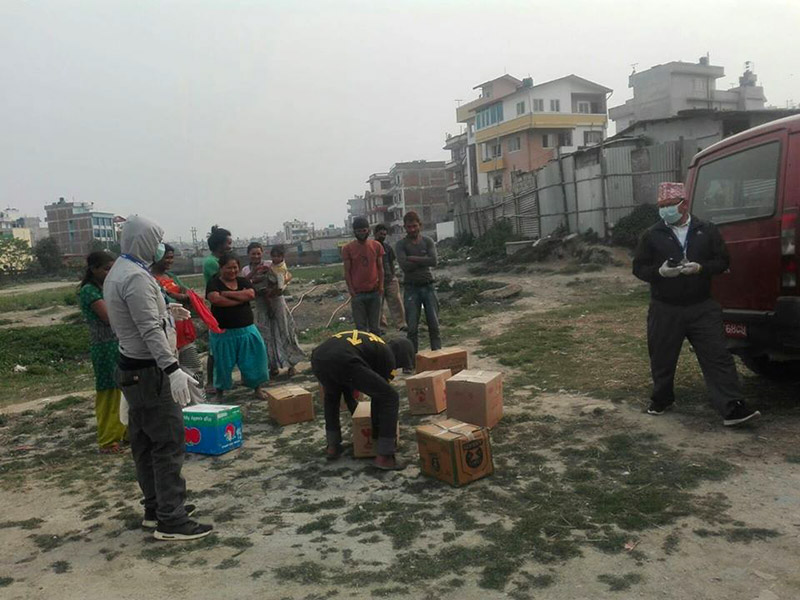The invisible kids: Daunting consequences in front of them
Kathmandu
The sight of youngsters sniffing glue on the streets of the Capital has become a thing of the past, thanks to the Central Child Welfare Board (CCWB) and National Child Rights Council (NCRC), who have rescued several such children. The Council, since 2016, has rescued 1,338 children from the streets of Kathmandu.
According to a 2015 report from Child Protection Centres and Services (CPCS), there were around 5,000 street children all over Nepal. Among them 1,200 to 1,500 were estimated to be inside Kathmandu alone. Today, their number has decreased significantly. In the wake of the nationwide lockdown, the number of street children in the City is difficult to determine, but officials working with this vulnerable group say there still remains several of them increasingly facing daunting consequences.
Homeless and hiding
The Kathmandu Metropolitan City (KMC) on December 15, 2019 launched a campaign to make the City free from street-dependent people and until February had rescued around 750 out of which 605 were males, 123 females, and only 15 children. KMC Spokesperson Ishwor Man Dangol says many of the street children were placed in institutions before the lockdown. Many who have families living on the outskirts of the City have returned to their homes, while others are housed at a non-profit social organisation called Manav Sewa Ashram based in Makwanpur.
Despite KMC’s claim to have cleared the streets of homeless children, there is still a substantial number of ‘invisible children’, living away from the main roads, as per Sagar Bhandari, Programme officer at Child Workers in Nepal (CWIN). He says they continue to live in the heart of Kathmandu, under bridges, inside of godowns and other unsurveilled nooks of the urban sprawl. “Most of them salvage for food during the day and end up in squatter areas. Recently we found some runaways in an abandoned building at Kamaladi,” informs Bhandari, who is also working as Assistant Program Manager at Child Helpline Nepal 1098.
“Most are constantly changing their living space, setting their sights on where they can find security, peace and food. The situation is getting worse,” reveals Kailash Rawal, working in the relief team of CPCS.
On April 20, CPCS relief team delivered necessary provisions for 60 young boys and girls in Pashupati, New Buspark and Teku — supplies enough to last a week. “Each one of them had different circumstances, some ate under the bridge and cooked, others cooked on the lonely bank of the river. The main problem now is that the gas and wood requirements for cooking is adding up,” observes Rawal.
In many other cities too, local governments and charities have been helping children and homeless people. The Pokhara Metropolitan City along with Kaski Police rescued 30 street children, who are now kept in a non-profit organisation Children-Nepal at Lebade, Pokhara.
Contradiction
Many NGOs via their social media handle have provided photographic evidences of distributing relief packages to street children. But NCRC downright rejects the very presence of street children in Kathmandu. “There are no cases of homeless kids stranded during the lockdown as per the Council’s knowledge,” says Krishna Prasad Bhusal, Administrative Chief at NCRC. He refutes NGOs’ claim of distributing relief funds. “If they claim to have found such children, they should have contacted National Center For Children At Risk at the toll-free number 104. So far we haven’t received any calls that relayed information to us about children they have supposedly been distributing relief packages to.”
Following the 2015 Directive from the Ministry of Women, Children and Social Welfare, NGOs can’t simply rescue such children on their own volition, but must inform the CCWB or NCRC. The directive states that any organisation functioning for the street children must get necessary recommendation and permission from the authorities concerned, namely the District Child Welfare Board (DCWB) and Central Child Welfare Board (CCWB) before conducting any welfare programme.
Now the question is who to believe: NGOs who have been working closely with street children, or the government body responsible for the welfare of children?
A version of this article appears in e-paper on April 26, 2020 of The Himalayan Times.






